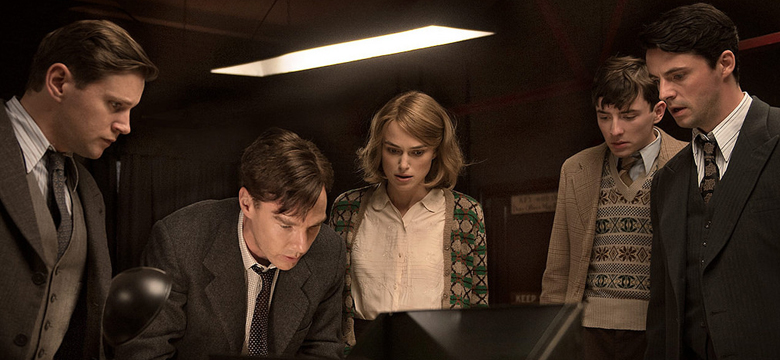Like many Holidays-makers (happy to be off work, though desperate to escape their relatives), I recently saw The Imitation Game. Based on true events, The Imitation Game chronicles the struggle of Alan Turing, father of the digital computer, to break the “unbreakable” Nazi Enigma code during World War II.
I initially went to see Benedict Cumberbatch (sigh), but came away curious about a supporting character. Turing’s closest ally in his struggle was a fellow mathematician and cryptanalyst: Joan Clarke. Although it’s Turing’s story, I was much more intrigued by Clarke, who is clearly a foil for his character: they are both outsiders. Whereas Turing was isolated by his closeted homosexuality and social awkwardness, Clarke was restricted simply by being a woman in a man’s world.
Like Turing, Clarke was a brilliant mathematician and a Senior Wrangler during her time at Cambridge. Despite her double first in mathematics, women were not granted full Cambridge degrees until 1948. For her efforts, Clarke received a pat on the head and a train ticket home. After being recruited to Bletchley Park, Britain’s super-secret decryption headquarters throughout the war, Clarke soon found that there was no provision for female cryptanalysts.
As an unmarried woman, it was also considered highly unsuitable for Clarke to work closely with men. Moreover, to receive a pay grade that equaled her male counterparts, Clarke’s official title was “Linguist,” though Clarke herself spoke no language but English.
The Imitation Game, portrays Clarke as a vivacious and outgoing young woman, but the real Clarke was reserved, even shy, according to her contemporaries. Never one to seek the spotlight, it’s good to see Clarke finally getting some recognition. Though a key member of the group of cryptanalysts who worked on Enigma, you have to look carefully to find more than a brief mention of her in the historical accounts of Bletchley Park. Clarke was awarded a humble M.B.E. during her lifetime, and quietly forgotten. Her consolation prize? Being played by Keira Knightley in the movie.
I would like to highlight an aspect of Clarke’s career that didn’t make it into the film. Joan Clarke was a numismatist. Make that bloody good numismatist. Not merely an enthusiast or collector, Clarke brought to numismatics the same analytical mind and attention to detail which helped bring the 3rd Reich to its knees during WWII.
Introduced to the world of coins by her husband in 1965, Clarke specialized in medieval Scottish coinage. Although coins from this period are particularly difficult to date and sequence, Clarke possessed a real talent for analyzing data. Supplemented by extensive historical research, Clarke presented her findings in several numismatic publications, most frequently for the British Numismatic Journal, (published under her married name J.E.L. Murray).
Most notably, she developed an alternate sequencing for gold unicorns and heavy groats under James III and James IV that is still used today. Just check the references to her work in your Spink Numismatic Circular! For her scholarly advances in the understanding of Scottish coinage and currency from the late 14th to the early 16th century, Clarke was awarded the Sanford Saltus Gold Medal (1986), the British Numismatic Society’s highest honor.
After seeing The Imitation Game, no doubt many thousands will have a new found respect for trailblazers like Joan Clarke who dared to do a “man’s job” in a gender-biased world. Thankfully, the world of numismatics knows no such bias, and we can appreciate Clarke’s work simply because it was so damn good.
By Holly Culbreath
